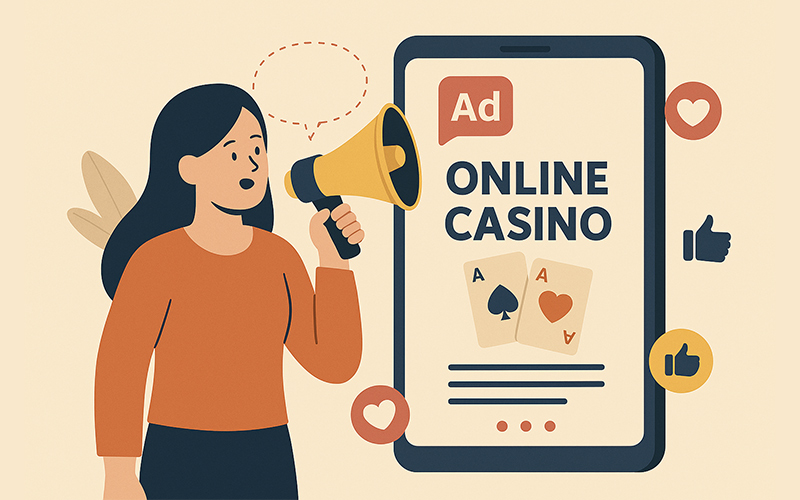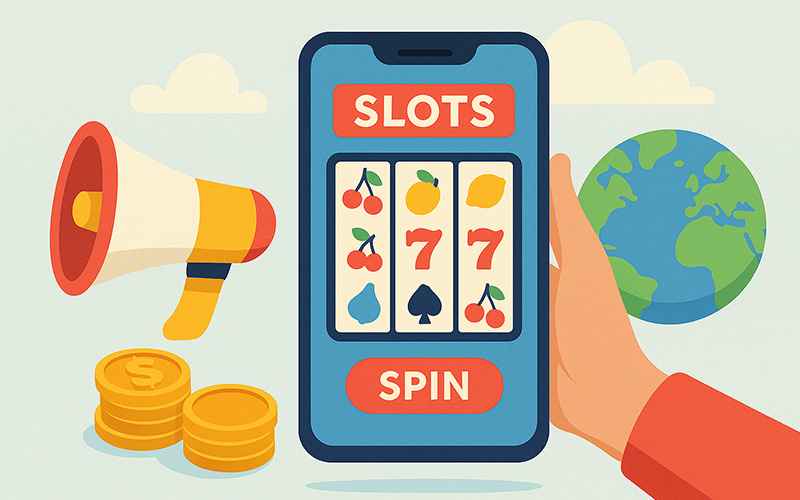Push alerts, popunder windows, and native blocks have a dated reputation in iGaming. Many teams link them with cheap traffic, opt-outs, and frustrated users. The truth is that these formats still move the numbers when the message, the landing path, and the geo–device mix align. Fresh campaign data and field experience show that scepticism usually comes from weak execution, not from the formats themselves.
Gaminator experts help you see where pop, push, and native fit in a 2025 funnel, which pricing models make sense at each stage, and how to warm up traffic before the offer. Our experts cover starting budgets, pacing and frequency control, creative testing rhythms, and the geo and device choices that protect ROI.

Scepticism Regarding the Pop Format
Doubt around this ad type did not appear out of thin air. In the early 2010s, push and popunder were everywhere, and audiences grew tired. People learned to ignore notifications, close extra tabs on autopilot, and scroll past “recommended” stories that felt too salesy. Overuse created the idea that these channels equal spam, while some teams kept buying volume with no analysis of user intent.
Another reason is execution. Many campaigns still go straight to the offer, skip warming, and use generic creatives. Broad targeting, no frequency limits, and slow pages make a bad first impression and drag down conversion. When this happens, teams blame the format rather than the funnel. Platform filters and stricter ad policies added friction as well.
The result is a persistent myth that pop, push, and native do not work for iGaming. The data tells a different story when creatives speak to the right audience, landers are fast and credible, and traffic is segmented by geo, device, and time. The format is rarely the problem. The strategy, the context, and the craft decide the outcome.
What each format really does:
- Push. A short alert lands on the device screen and pulls attention immediately. It is ideal for quick tests, retargeting, and time-sensitive promos.
- Popunder. A new page opens under the active tab and waits until the session ends. It is a volume tool for cheap hypothesis testing and geo/device sampling.
- Native. An ad sits inside “recommended articles” or similar widgets and looks like part of the site. It warms cold users, builds trust, and prepares them for the offer.
Performance data from recent runs suggests these formats still have legs. In push campaigns, reported ROI can reach about 116% when creatives are tight and the pre-lander is fast. Popunder tests often show click-through rates around 5%, far above classic banners. Native routinely beats display as well, with average CTRs near 0.2% versus roughly 0.05% for standard banner units.
There are also clear signs that scale is possible outside Tier-1. In several African geos over a 20-day window, popunder traffic delivered first-time deposits at workable unit costs.
Key numbers:
- 770 FTD in North Africa at $26.70 per registration;
- 344 in South Africa at ~$10.95;
- 244 in East Africa at ~$15.34;
- 93 in West Africa at ~$13.65.
The pattern is simple. When the geo is a fit, the landing is swift, and the story makes sense, pop and push generate stable volume at sensible prices.
The takeaway is not that a format guarantees profit. It is the right mix of geo, device, creative, and path that can push these channels above common benchmarks. Numbers move when the execution is disciplined.
Ad Campaign Basics and Hygiene
Before the first dollar goes out for promotion, it is critical to set the rules that will protect your test budget and keep data clean. The aim is to control who sees the ad, how often, when, and at what spending pace.
Aspects to consider during the preparation:
- Define the audience portrait. Specify geo, target action (registration or deposit), age bands, interests, devices, and an estimate of purchasing power. This keeps creatives relevant and landings focused.
- Cap daily spend and enable even pacing. Limit outlay per day and avoid front-loading in the morning. You collect steadier data and reduce the risk of paying for low-quality bursts.
- Set frequency limits and visit caps. Decide how many impressions and visits a user can have per day or per week. This protects brand perception and stabilises CTR and CR.
- Schedule delivery around context. Align peaks with sports fixtures, public holidays, and salary days in each geo. Off-peak slots are useful for cheaper tests, but do not ignore high-intent windows.
- Prepare the landing path. Ensure instant load, clear value, one primary action, and localised compliance copy. Add pre-landers or quizzes if you plan to warm users before the offer.
- Instrument tracking from day one. Use a tracker for source, placement, device, and browser data, and pass back conversions. Clean logs are the fastest path to profitable optimisation.
Budget defines the speed of learning more than success. It is a sensible approach to enter with discipline, buy only the data you need, and scale when patterns are stable. Start small, prove the path, then widen geos and placements.
Budget planning:
- Set your entry stake. A small top-up around the minimum is enough for a first run. It buys clicks, not certainty, so treat it as a learning ticket.
- Narrow the scope. Pick one format and one or two geos. Test creatives and the funnel before you add more variables.
- Aim for a data threshold. You need enough impressions and conversions to trust the rates. Do not judge a campaign on a handful of leads.
- Step up when signals converge. If CTR and CR hold across hours, days, and placements, increase the cap to accelerate learning. A larger budget helps you reach significance faster.
- Protect the downside. Freeze weak segments, recycle budgets into winners, and keep frequency and pacing limits on. Scale is a reward for control, not a substitute for it.
How to Use Formats that Work in 2025
Single-channel bursts rarely hold performance in iGaming. Warmed, multi-step funnels do. A push or short video creates the first spark. A quiz or pre-lander filters intent. Native content builds trust. The offer appears only when the user has context and a strong desire. This flow reduces wasted clicks, stabilises conversion, and protects budgets in stricter markets.
Push excels at speed and timing. Native earns credibility and frames value. Popunder supplies cheap reach for hypothesis testing and geo/device mapping. When they run in sequence, each touchpoint carries a clear job, whether it is to attract, warm, qualify, or convert. Add precise segmentation by geo, device, and time of day, and the same spend produces cleaner data and a higher share of real players.
The final ingredient is rhythm. Creatives refresh every few days, frequency caps keep fatigue down, and schedules lean into paydays, holidays, and major sports. With this cadence, funnels stay fresh, and scale arrives from a proven system rather than a lucky placement.
Push
This format shines for quick attention and time-sensitive promos. It works best on mobile with fast paths and tight stories that set up the click.
What to keep in mind:
- Advantages include instant visibility on the device, a strong fit for retargeting, and easy scaling in Tier-2/3.
- Specifics are a punchy headline and curiosity-driving icon, pre-landers in story or testimonial style, and mobile-first load speed.
- Used effectively when testing new offers on a budget, re-engaging warm users, syncing with sports fixtures, paydays, or flash deals.
Popunder
This format is a cost-efficient way to sample geos, devices, and placements at scale. The lander must convert fast, with one action front and centre.
What to keep in mind:
- Advantages include low unit costs, big volumes for hypothesis testing, and direct arrival to offer or pre-lander.
- Specifics are ultra-fast pages, bold CTA, minimal friction, broad audiences, and strict filters by device, browser, and language.
- Used effectively when mapping profitable segments, filling the top of the funnel cheaply, and pairing with pre-landers to lift engagement.
Native
This format earns attention inside content feeds and warms users who dislike hard sells. It prepares cold traffic for the offer through value and social proof.
What to keep in mind:
- Advantages include higher engagement than display, credibility via editorial context, and a strong fit for legal brands.
- Specifics comprise that the creative must feel part of the site, while the headline promises clear value with reviews, comments, and proof.
- Used most efficiently when building intent ahead of registration/deposit, working Tier-1/2 where users reward content quality, and nurturing “smarter” audiences.
Pricing Models and Geo Usage
Operators should pick the financial plan that matches their stage and data depth, then switch when signals are stable. A simple progression works for most teams.
Different pricing opportunities:
- CPC. You pay per click, so you can cap costs while you test creatives, headlines, and landings. Use CPC to find combinations with healthy CTR and early CR. Stop weak segments quickly and recycle budget into winners.
- CPM. You pay per thousand impressions, which suits stable, high-CTR setups. CPM lets you buy reach at better unit economics once you already know which placements, geos, and devices respond. Watch frequency and viewability to avoid waste.
- CPA target. You optimise toward a desired cost per action. This reduces manual tweaks when you have enough conversion data and clean postbacks. Start only after you see steady volumes and consistent CR, since noisy data confuses the algorithm.
The most practical path will be to test on CPC, then graduate to CPM for scale, and add CPA target when tracking and volumes are reliable. Keep a small CPC sandbox alive to trial fresh creatives and new geos without risking your scaled lines.
Formats behave differently by region and screen. Regulations, user habits, and device age all shape outcomes. Tier-1 markets reward trust and speed over shock value. Native plus strong pre-landers tend to outperform hard sells. Verification steps are stricter, so expect lower CR and higher CAC, but better LTV. Tier-2/3 markets are more flexible. Popunder and push can scale quickly at low unit costs if the landing path is fast and clear.
Mobile usually wins for push and popunder. Here, Android takes the lead due to looser notification settings and broader device share. Desktop still matters for native on long-form publishers, especially after work hours. Old browsers and low-RAM devices punish heavy pages, so keep assets light and defer scripts.
Mistakes that Kill Performance
Many teams blame the channel when the setup is the real problem. Check your campaign against common traps before you scale. These issues will quietly drain the budget that could have been spent on performance improvements instead.
What to watch out for:
- weak creatives and flat headlines;
- stale ads that run past fatigue;
- bid cuts without cohort analysis;
- zero segmentation by geo/device/time;
- no retargeting of warm users.
One of the most practical fixes is to rotate angles every 3–5 days. This way, an operator will be able to judge results at a segment level (placement, browser, hour), synchronise delivery with events and paydays, and always run a retargeting line for registrants and one-time depositors.
Traffic Quality Control

Performance decides lifetime value. Operators should prioritise building checks into the path so fraud and low-intent clicks do not flood the funnel. The aim is to verify that a real person with a genuine interest reached the right page and behaved like a future player.
Behavioural Analytics
Track what happens after the click. Time on pre-lander, scroll depth, element interactions, mouse movement, and conversion periods reveal patterns. Real users explore, hesitate, and return, while scripts rush or bounce instantly. Use these signals to score placements and filter sources that never produce natural behaviour.
Hidden Bot Traps
Plant passive checks in forms and pre-landers. Invisible fields, honeypot links, and interaction gates flag non-human visitors. If a “user” fills a hidden field or hits a ghost link, blacklist the placement or route it to a dead-end. Keep traps rotating so they are harder to game.
Speed and Density Anomalies
Watch the tempo of clicks. Sudden bursts from one placement, identical session lengths, or improbable click-per-second spikes point to automation. Set alerts for abnormal velocity and clamp spend when it fires. Combine with device and browser cuts to isolate the source.
Dedicated Anti-Fraud Layers
Add specialised verification on top of your tracker. Tools that validate user agents, check landing integrity, analyse behaviour, and reconcile conversion events help keep budgets safe. Pair this with a human review loop for suspicious geos or publishers, so questionable traffic never reaches scale.
In-app, Influencer, and Telegram Notes
In 2025, side channels work best as amplifiers, not replacements. Influencer shout-outs and Telegram placements deliver strong ROI when they warm users before paid traffic or catch them after the first touch. Niche creators and streamers convert better than broad lifestyle accounts because the audience already understands odds, bonuses, and game flow. Treat them as intent builders that motivate qualified users into your quiz or pre-lander, then let pop or push handle scale.
In-app inventory adds timeliness. Promo slots, inbox messages, and on-site banners help you cross-sell events and revive dormant players. Keep the copy service-first and local to the geo. Pair each in-app touch with a short video or native article that answers doubts and shows real value. Over time, SEO and long-form content remain the spine of acquisition. They lower the cost per lead, power retargeting audiences, and give your pop/native paths credible destinations that survive policy shifts.
The Main Things about iGaming Ads in 2025
- Pop, push, and native perform when the funnel, creatives, and geo–device mix are aligned. These formats should be treated as roles inside one system, and results will become predictable, scalable, and easier to defend under stricter policies.
- Scepticism about push, popunder, and native formats comes from poor execution, not the types themselves.
- Each of the options fulfils a distinct role to spark, scale, and develop trust in users.
- Operators should use these formats with a narrow start, thorough budget estimation, and a context schedule.
- It is critical to test on CPC, scale with CPM, and automate with CPA Target once data is stable.
- The lifetime value should be protected with behavioural checks, bot traps, velocity alerts, and anti-fraud layers.



